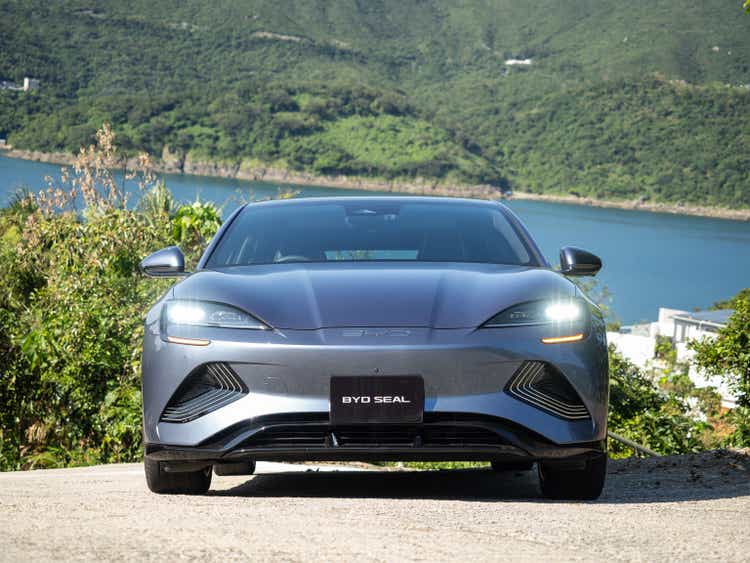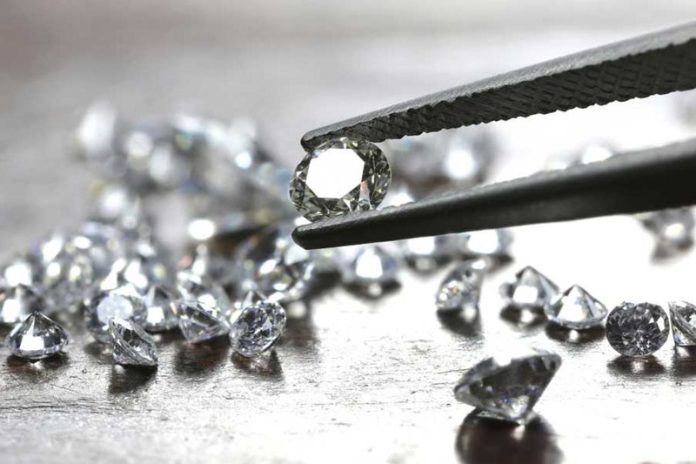BYD SEAL 2023 Test Drive Day teddyleung/iStock Editorial via Getty Images Record second-quarter sales numbers from China further ratified the rising dominance of the nation’s auto industry and, in particular, that of BYD ( OTCPK:BYDDY ) – whose global deliveries of battery-electric vehicles (BEVs) edged closer to that of Tesla. BYD Quarterly Sales Increases (Bloomberg) The growing anxiety among nations and incumbent automakers such as Volkswagen AG ( OTCPK:VWAGY ) and General Motors Co. ( GM ) is reflected by the recent increases in tariffs in the U.
S. and Europe meant to slow the rapid growth of Chinese car brands in developed markets. For investors, key issues are how to benefit from what looks like a long-term, sustainable trend toward Chinese auto ascendancy and how to avoid losses from those automakers that will be hurt as BYD and others rise.

Fully priced? According to Seeking Alpha’s valuation chart , BYD looks fully priced at a trailing twelve-month P/E of 21, compared to valuations of GM, 5.7, Ford Motor Co. ( F ) 13.
3; Stellantis N.V. ( STLA ) 2.
98; and Toyota Motor Corp. ( TM ) 8.45.
(Tesla’s TTM PE of 67 may safely be considered an outlier) However, BYD’s profitability is impressive among the world’s top automotive manufacturers, according to the Seeking Alpha’s profitability table . The big upward move in BYDDY happened in early 2020 through early 2021 when the share prices rose from roughly $10 to about $70. For the past three years, the share price has bounced up and down within a fairly narrow range as analysts have evaluated the prospects of BYD and other Chinese automakers to expand their global footprint.
For the moment, signs increasingly point toward more Chinese production via foreign plants, as the Japanese and South Koreans have done previously in response to tariffs on their vehicle exports. This month, BYD opened its first assembly plant outside of China in Thailand, with a potential capacity of 150,000 vehicles annually. The automaker also is building assembly plants in Brazil (in an old Ford plant) and Hungary, with an additional plant slated for Turkey.
The announcement for the Turkish plant came shortly after the announcement by the EU of tariffs of up to 38% on Chinese auto exports; the EU has concluded that Chinese state subsidies are unfairly undermining European competitors. BYD cars built in Turkey will effectively escape tariffs applied to Chinese cars. Additionally, BYD is reported to be in talks to open a plant in Mexico.
Movable pricing BYD has demonstrated a flexible pricing strategy for its vehicles depending on local conditions, which has pleased some consumers, angered others. In China, its smallest and least expensive BEVs sell for less than $15,000; overseas BYD models are priced competitively to local manufacturers even after the tariff is applied. In Thailand, BYD lowered the prices of its vehicles to celebrate the opening of its new plant, angering some consumers who had bought earlier at higher prices .
BYD Seal with 5th-gen plug-in hybrid tech (BYD) While BYD has gained attention for its low-price BEV models, it also has developed a strong expertise in plug-in hybrids, which can run purely on battery on in conjunction with an onboard gasoline engine – thus obviating consumer anxiety over range. The automaker’s fifth-generation dual motor hybrid tech will be available initially in China, claiming a 1,300-mile range on a full tank of gas and a fully-charged battery. BYD has been working on the plug-in since 2008; and its fourth-generation setup currently is available in Europe in a model called Seal U DM-i, costing about $43,000 with a range of nearly 300 miles in mild weather.
BYD’s market aspirations are hardly modest, in terms of numbers or prestige. Last year, the automaker launched its luxury sub-brand “Yangwang,” which means “looking up.” The sub-brand’s first offering was its U9 supercar, spotted during tests at Germany’s Nurburgring, it claims a 0-60 acceleration of under 3 seconds, faster than some German and Italian supercars.
BYD Yangwang U8 premium offroad (BYD) In September, BYD announced its U8 luxury competitor to Range Rover and other off-road style SUVs, priced at roughly $150,000. The plug-in hybrid system boasts a maximum range of more than 620 miles. With a rating of 1,200 horsepower, U8 claims a 0-60 acceleration in under 3.
6 seconds. Temporarily unsinkable In the event of a flash flood or sudden deep water conditions, BYD asserts that the vehicle is designed to float for 30 minutes. Later this year, BYD said it will launch its U7 “electric sedan” meant to compete with Porsche Taycan and Tesla’s high-end BEV.
Price: about $140,00. The U7’s roofline features a prominent LIDAR component, suggesting an advanced self-driving system. At the other end of the spectrum is BYD’s Sea Lion series, which appears designed to compete directly with Tesla’s popular Model Y – although at a significantly lower price.
The Sea Lion 7 and Sea Lion 5 Series sell for as little as $28,000 in China. The Model Y costs about $36,000 in China. A potential obstacle and risk factor will be the capability of BYD and makers of advanced vehicles – which are loaded with advanced electronic machinery and software – to gather data.
Cameras, sensors and other devices can store and send data wirelessly to the manufacturer. Over-the-air updates routinely are sent to maintain and modernize software. But data transmission also could be exploited by governments for nefarious purposes, such determining identify and movements of specific vehicles, the location of military installations or to disable vehicles.
Spy worries The Chinese aren’t the only parties that could enable cars as tools for espionage. Tesla vehicles have been restricted from some locations in China for presumably the same reason. It’s no secret that battery-electric automakers worldwide – especially startups – are facing tough times due to slowing consumer demand for the product.
BYD is in excellent shape to respond with plug-in hybrids until BEV demand picks up. Rival BEV manufacturers and startups that don’t have a plug-in or that have earlier, less sophisticated plug-in technology are likely to suffer. An important and unanswered question is how soon BYD and other Chinese automakers will penetrate the U.
S. market. Geely has already done so with Volvo, a Chinese brand that presents with Swedish characteristics and style.
Polestar, a second BEV brand, will also be built at Geely’s South Carolina plant. This analysis assumes that BYD and other Chinese automakers will sooner or later come to the U.S.
, probably as manufacturers. With the political landscape beclouded due to doubts about President Joe Biden’s second term and the tariffs against imports favored by candidate Donald Trump, a major re-evaluation of the timeline for Chinese vehicles in the U.S.
will probably be evident after November. Editor's Note: This article discusses one or more securities that do not trade on a major U.S.
exchange. Please be aware of the risks associated with these stocks. Analyst’s Disclosure: I/we have a beneficial long position in the shares of TSLA either through stock ownership, options, or other derivatives.
I wrote this article myself, and it expresses my own opinions. I am not receiving compensation for it (other than from Seeking Alpha). I have no business relationship with any company whose stock is mentioned in this article.
Seeking Alpha's Disclosure: Past performance is no guarantee of future results. No recommendation or advice is being given as to whether any investment is suitable for a particular investor. Any views or opinions expressed above may not reflect those of Seeking Alpha as a whole.
Seeking Alpha is not a licensed securities dealer, broker or US investment adviser or investment bank. Our analysts are third party authors that include both professional investors and individual investors who may not be licensed or certified by any institute or regulatory body..



















